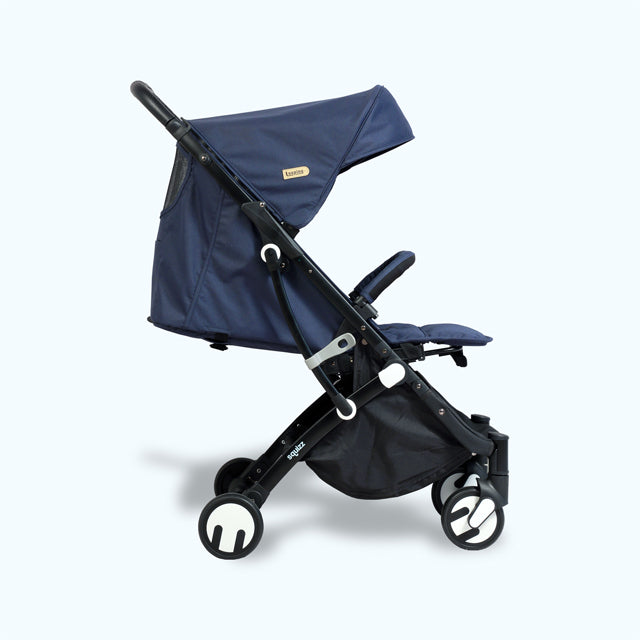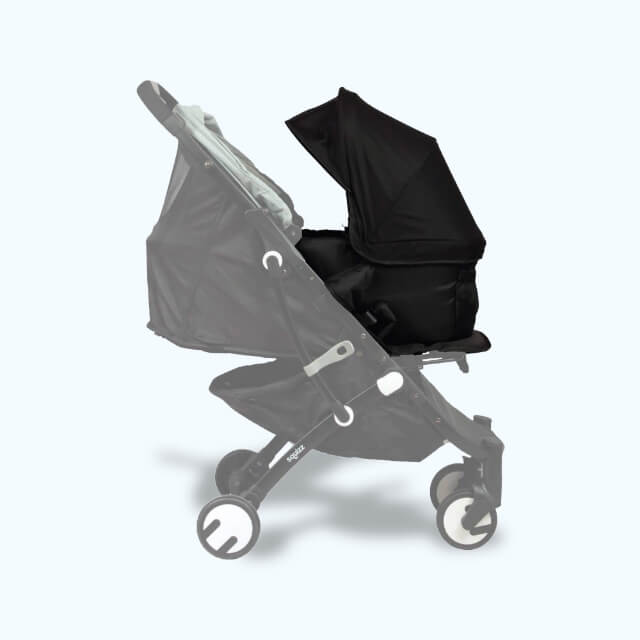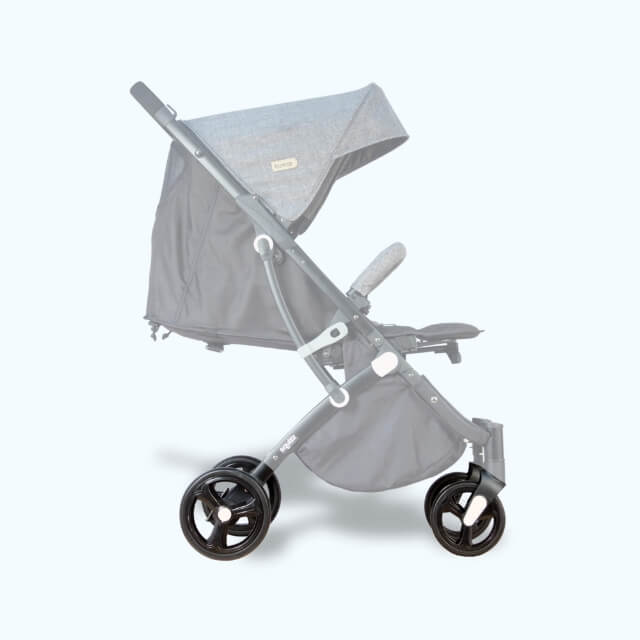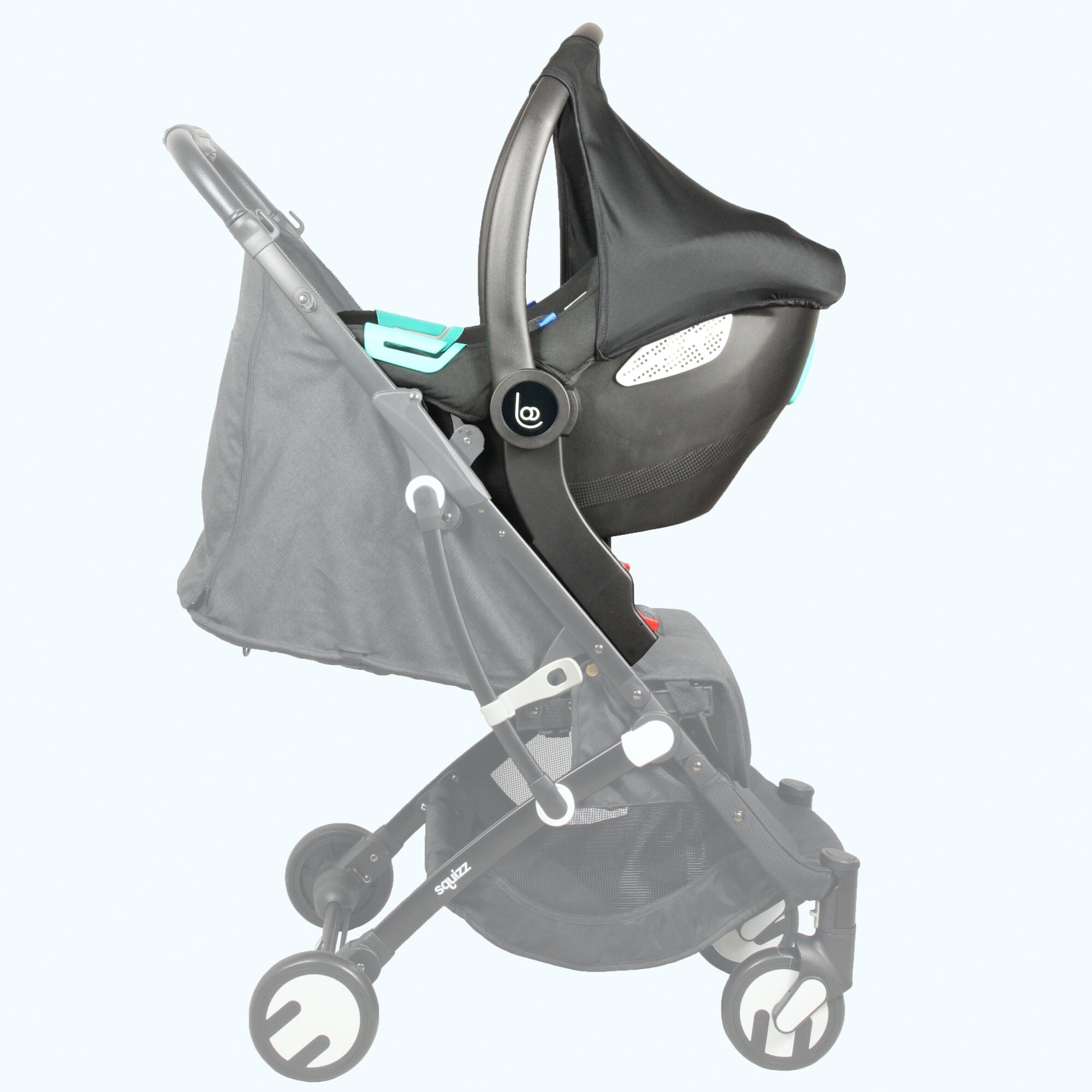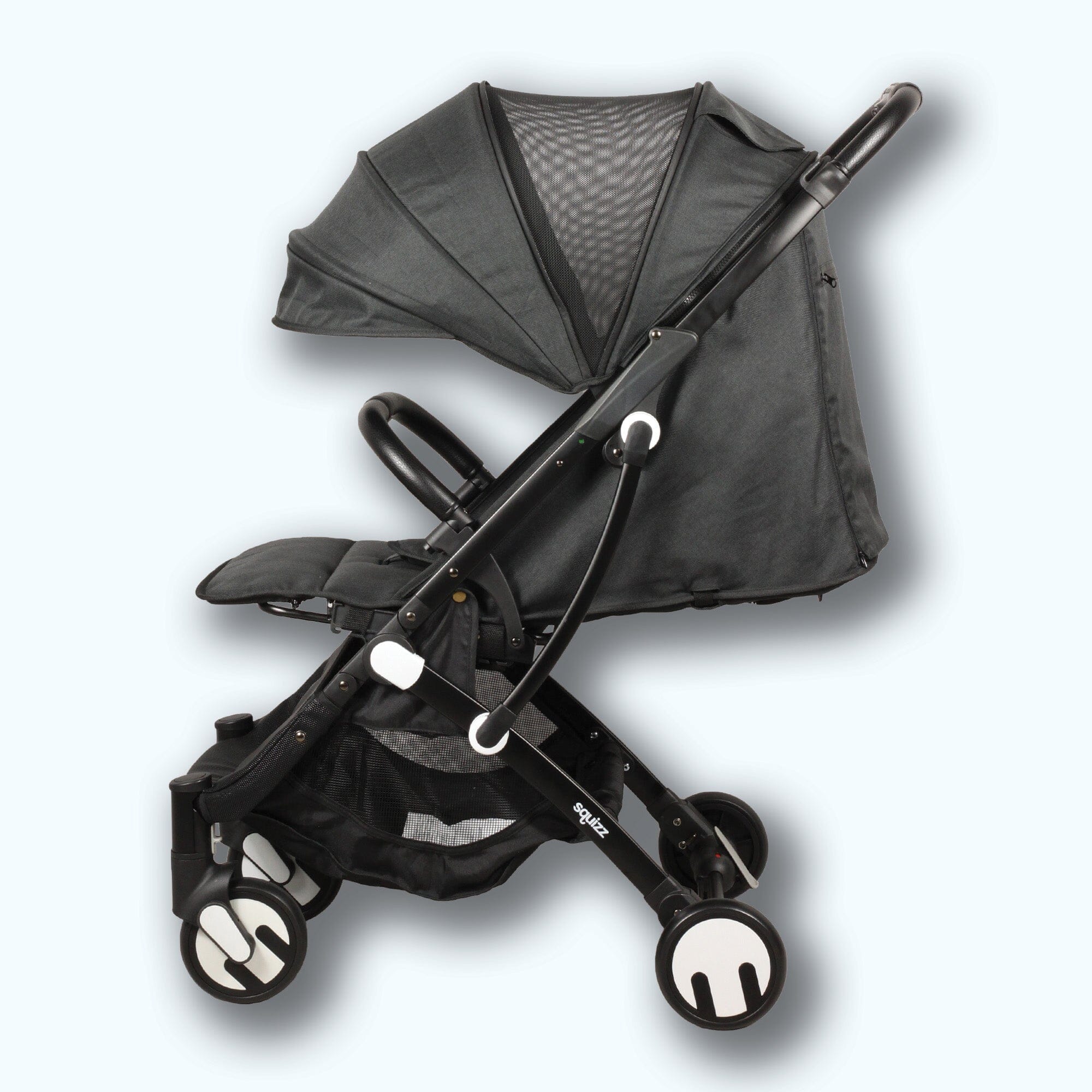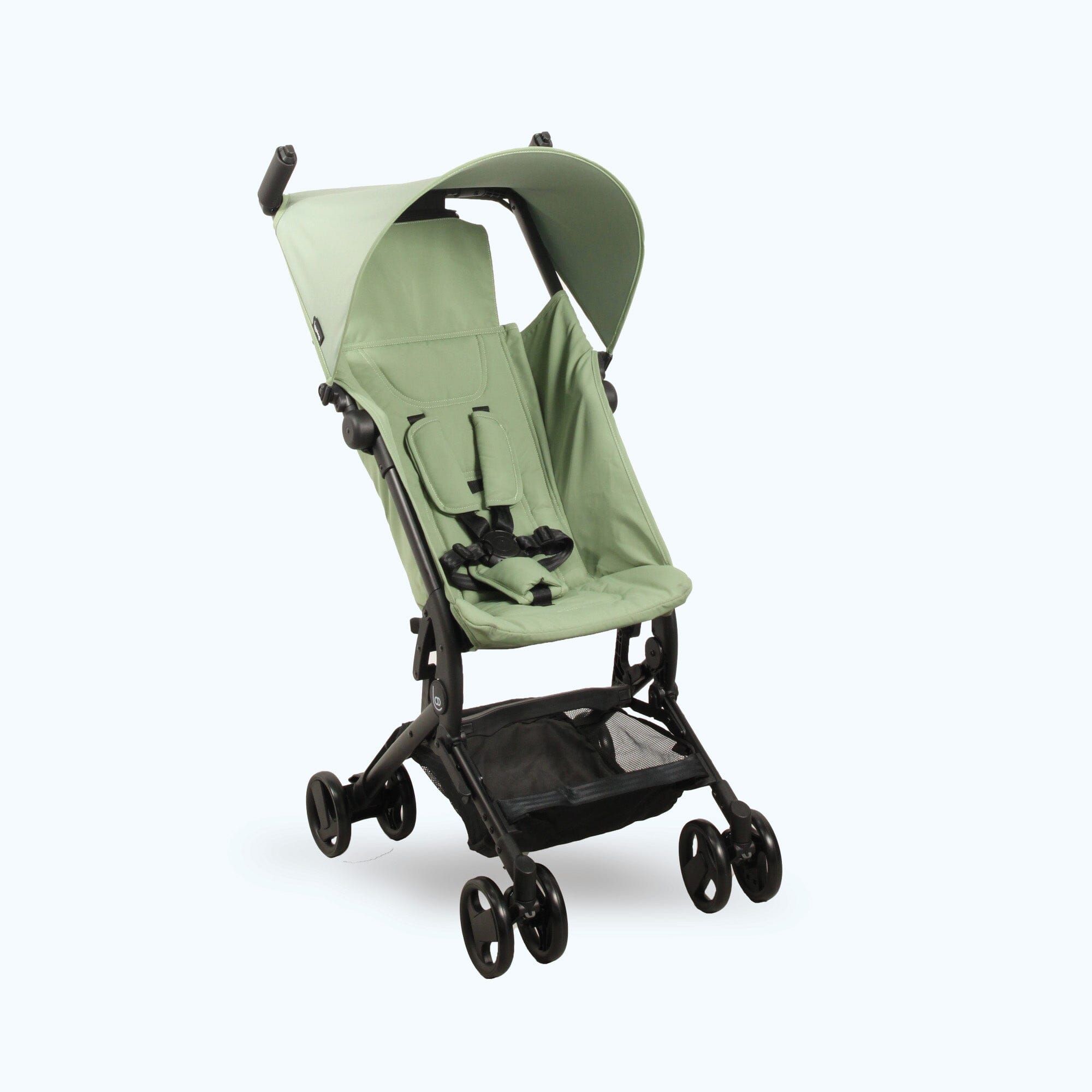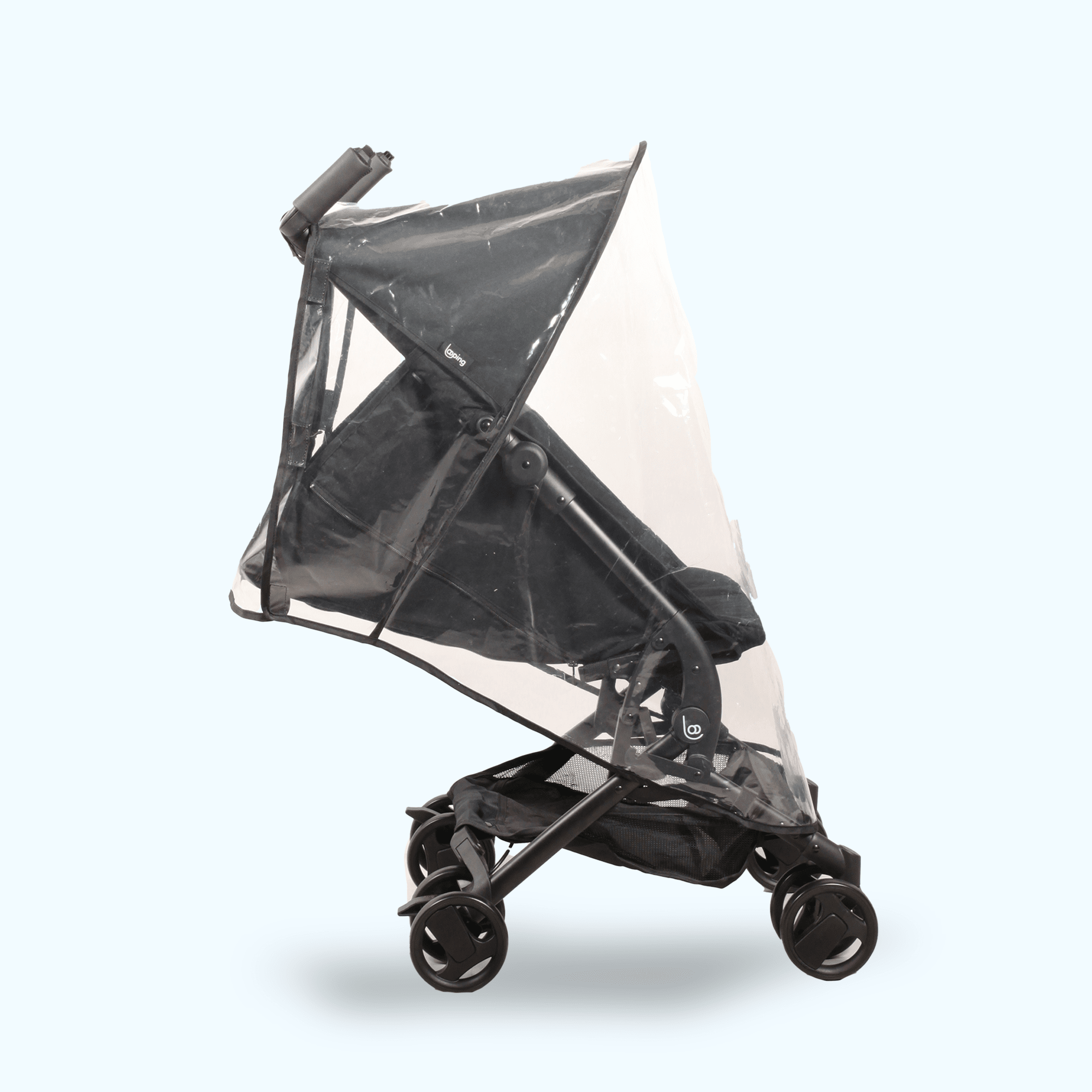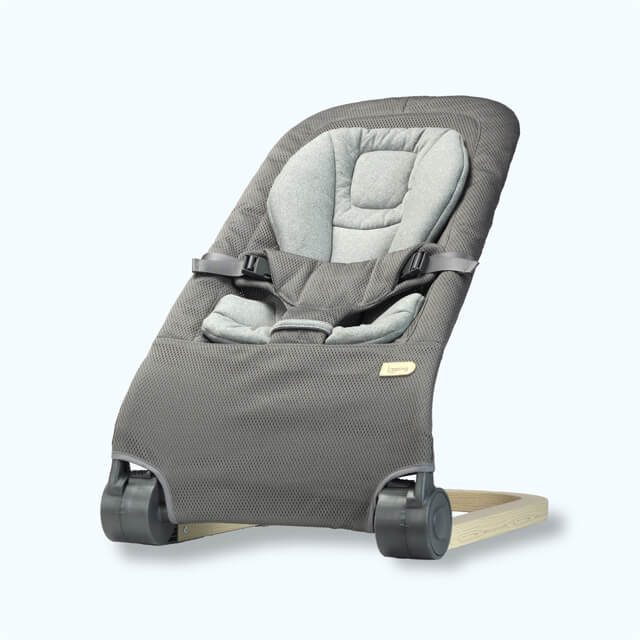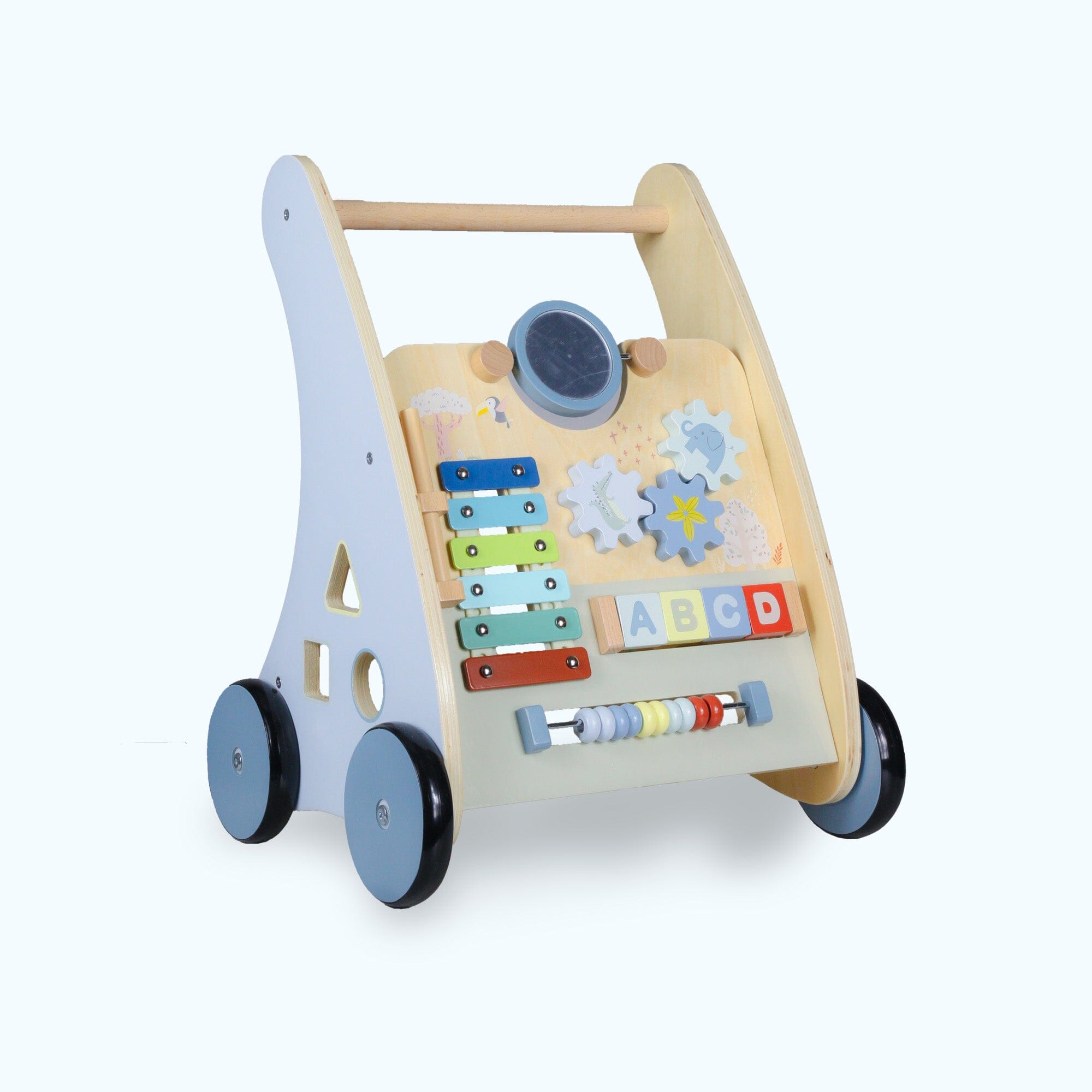Childbirth can and should be a beautiful experience. But the prospect of childbirth can give some women anxiety because of the pain and anticipated discomfort.
1. Natural or epidural?
Childbirth can and should be a beautiful experience. But the prospect of childbirth can cause anxiety in some women because of the predictable pain. While many women choose to receive epidurals ( partial anesthesia to relieve pain ) in order to give birth more comfortably, many choose natural births. There are growing concerns about the side effects of medical births and epidurals.
What constitutes a “natural birth”?
The term "natural birth" is usually used to describe a vaginal birth performed without medication. It is also sometimes used to distinguish vaginal delivery and cesarean delivery.
Discuss the options with your doctor or midwife to determine which method is best for you and your child. In the meantime, here are some of the most important points to consider.
When is an epidural used?
An epidural decreases pain by numbing the lower part of the body. Women often choose to have one. It is also sometimes a medical necessity if there are complications, such as those resulting in a caesarean section. An anesthesiologist pricks your lower back, between two vertebrae, to introduce a catheter (a thin, flexible tube) into the epidural space that surrounds the dura mater meninge, close to the spinal cord. The installation takes just a few minutes.
Benefits
The advantage of an epidural is to significantly reduce pain during childbirth. Even if you still feel contractions, the pain decreases considerably. During a vaginal delivery and under epidural you live in full consciousness the birth of your child without pain.
An epidural is also necessary in a cesarean delivery. Caesarean section is a surgical procedure that involves removing the new born by way abdominal after incision of the wall abdominal (laparotomy) and uterus (hysterotomy). She is practiced when the way low is impossible or contraindicated. Caesarean section is performed by an obstetrician, in a operating room , below anesthesia. In rare cases, general anesthesia can be performed in cases of extreme urgency or contraindication to loco-regional anesthesia .
Caesarean section can be performed during labor or can be scheduled upstream if vaginal delivery is impossible or contraindicated.
Risks
Here are some risk factors for an epidural:
- Back pain and soreness
- Headache
- Persistent bleeding (from the puncture site);
- Fever
- Breathing difficulties
- Lower blood pressure, which can slow the baby's heart rate;
It is important to note that although such risks exist, they are considered rare.
The fact that mothers cannot feel all the elements of childbirth with an epidural can also lead to a host of other issues, such as the increased risk of tearing during vaginal birth.
The risks associated with caesarean deliveries are not necessarily related to the epidural. Unlike natural births, these are surgeries, so recovery times are longer and there is a risk of infection. Cesarean deliveries have also been associated with a greater risk of childhood chronic diseases (including type 1 diabetes, asthma and obesity).
Testimonials
Three influential moms have kindly agreed to testify for us. For @Laesha , the epidural is not a regret. She allowed him to bear the pain. “Of course, every birth is different, but I can't even imagine giving birth without an epidural,” she confides.
@Maman_de_roy_2019 initially did not want to give birth under an epidural. “I wanted to feel my baby”. However, she soon changed her mind. "I could not any more ! I decided to take the epidural when I was 7 cm dilated. Indeed, it takes away all the pain of the contractions. We just feel that it grows. ” she continued. But @Maman_de_Roy_2019 admits that even the apprehension of pain did not manage to take away the pleasure that one can feel in this kind of moment “ We were overexcited, and I did not think at all about the pain. I was so looking forward to meeting Roy!”
Some situations may be unique. This is the case of @laetitia_happy_family . Mother of three little boys aged 5, 3 and 22 months, she gave birth under an epidural. “A vaginal trial that ended in caesarean section.” She explains to us, before continuing: “ I was frustrated to end up with a caesarean, I would have liked to give birth in a low voice, but I have no regrets about this day since everything was done so that my baby could be in good health. At the level of the epidural, in my experience, it did not relieve me. It was done under triggering and the catheter was not properly placed.”
natural birth
Benefits
Choosing not to take medication doesn't mean the birth process has to be incredibly painful. With epidural-free births, the birthing person's own hormones can naturally help labor progress steadily and without intervention. The endorphins released during birth can relieve pain and promote latching and breastfeeding after the baby is born. Medications can often interfere with this hormonal release.
Breathing : Being aware of the breath helps you increase awareness of the sensations in your body. This can help you be more aware of labor contractions to prevent complications. Breathing is also a relaxation tool that can help you stay calm, especially as the intensity of the work increases. Breathing techniques during childbirth aren't as dramatic as they are often portrayed in movies and on TV. The key is to take deep breaths.
Natural births have grown in popularity due to concerns that epidurals may interfere with the body's natural responses to labor and delivery. Ashley Shea, a birth doula ( woman alongside the pregnant woman and those around her, she listens to her desires, her needs and follows her in her choices) , yoga teacher, wise student -woman and founder of Organic Birth, has also witnessed this trend: "women want to be able to move freely to the machines, they want to stay at home as long as possible before going to the hospital, they don't want not be disturbed or over-supervised. They want to have immediate, uninterrupted skin-to-skin contact with their newborn and wait for the cord to stop pulsating before cutting it. »
Risks
There are some serious risks associated with natural births, especially when the mother has medical problems (pelvis too narrow) or if the baby presents badly for example. Possible consequences of vaginal delivery:
-
Tears in the perineum (area behind the vaginal wall)
-
Increased pain
-
Hemorrhoids
-
Intestinal problems
-
Urinary incontinence
Preparation
It is important to be prepared for the risks of a natural birth. Mothers might consider having a midwife come to the house or perhaps complete the birthing process in the hospital.
Childbirth education classes help prepare you for what lies ahead. This provides a safety net in case complications arise. Non-drug methods used to facilitate labor and delivery may include:
- Massage
- Acupressure
- take a hot bath
- Breathing Techniques
- Frequent position changes to compensate for changes in the pelvis
The final result
Due to the complexity of labor, there is no universal method for birth. According to the Office of Women's Health, these are just some of the factors doctors and midwives consider when making a recommendation:
- Overall health and emotional well-being of the mother
- The size of the mother's pelvis
- The mother's level of pain tolerance
- The level of intensity of the contractions
- Baby size or position
It's best to understand all of your options and know when you might need medication to ensure your baby can come into the world without complications.
Testimonials
For most women who chose natural childbirth, things came together and everything happened relatively quickly. We have unearthed some interesting testimonials on the subject on idkids. “I have absolutely no painful memories today, the hormones released at the time of birth being stronger than anything!”
Mathilde, Charlotte's mother, tells us more about this: “Even if it hurts, I want to know everything about the birth of my baby. In the maternity ward, I feel my body but I don't always know what's going on there. So I get on the first bed I see, in the monitoring room, I cling to the headboard and I shout that I'm pushing. I push because my body tells me to. It's natural, it's beautiful: It burns and I grow. When my daughter goes out, I feel a small fish pass like a medicine that repairs me. I no longer have pain. Not a tear. 6 hours later we are home with my first. »
2. How long does labor take?

No one can predict exactly how long your labor will last, but we can give you a rough idea of what to expect during the birth of your baby.
If you're going to be a first-time mom, active labor can take about eight hours. It's an average, it could be much shorter or longer than that. For example, for our two moms, @laesha and @Maman_de_roy_2019 , the labor lasted 10 and 15 hours respectively between the start of the contractions and the push.
In general, it is unlikely to last more than 18 hours, although anything can happen! For example, @laetitia_happy_family tells us that for her, it took 3 days. “It's because I was triggered,” she explains. But fortunately, in this kind of situation, the objective remains more important than the pain: “I was thinking of the only meeting with my baby. My pain was secondary.”
Once your cervix has dilated to 10cm, it might take you an hour or two of pushing before your baby is born.
If you've had a baby before, your labor will probably be much faster this time around. Active labor will usually take about five hours and will probably last no more than 12 hours. It can take up to an hour to push your baby, but often it only takes 5 or 10 minutes.
Other factors can also influence the duration of your labor. For example :
- The strength of your contractions.
- How your cervix opens (dilated or not).
- The start of work. Premature births tend to happen faster.
- If you have an epidural, that can slow down labor.
- Straight positions can speed things up.
- Your baby's position. If your baby is in a head-down position facing your back, your labor will likely be shorter.
- Staying as relaxed as possible can help you have a faster labor and birth.
Labor and birth have three stages:
- The first stage begins with the early, or latent phase. At this point, you experience cramping, back pain, and your water may break, although this is more likely to happen just before you feel ready to push. You may also have an upset stomach, and have what is known as a bloody show. These are signs that things are moving forward, but your midwife won't consider you in active labor until your cervix is about 4cm dilated, and your contractions are regular and strong.
- The second stage: your cervix will be fully dilated to 10 cm. You start pushing.
- The third stage is when you deliver the placenta. You can either have an injection to help it detach from your uterus or wait for it to happen naturally.
You may have friends or family members for whom it lasted two or three days. It seems awfully long, but it's a safe bet that it includes the early or latent phase of labor. Although this phase is uncomfortable, it is nothing as strenuous as active labor and the second stage.
3. Filming the birth or not

We all have a special relationship with our body, and this feeling is often amplified during pregnancy, which explains, among other things, why the video during childbirth arouses so many disagreements between some people. This may be a problem of ethics or even modesty. But childbirth is a unique experience because no matter how many children you have, each birth will be different.
Filming the birth
After giving birth to your child and holding this beautiful bundle in your arms, perhaps you can have a moment of reflection: how did this all happen? The whole process is impressive, but it requires a lot of concentration, which means everything is very blurry at the end. That's why capturing the experience on video can be special. Reliving that moment (in a condensed version, slightly edited?) is a unique gift.
No matter how good or bad your self-esteem is, you will be impressed with yourself. You will cherish this concrete visualization of the perfection of this day and your fabulous beauty. Plus, you create a mini-movie so you can show it to your kid one day. It's a nice way to document the beginning of your child's life for him, but also for your family. You'll love reliving that day and your child will love seeing how it all started. The whole life of this generation will be told in one way or another. Why not start from day one?
Of course, the advantage is that you can also keep this film for yourself. Feel free to show it to whoever you want!
Why not accompany your birth film with multiple mini films? More and more mums are getting into this style of filmmaking: it's not just the day the baby is born that is filmed — sometimes you get a glimpse of life before the baby arrives and another glimpse of home life after the baby is born. The set can give something very nice! The video gives you the opportunity to look at how things were when it was just the two of you and clearly see what changed when you became a threesome. Your child will love watching their later life scroll through this movie.
Do not film childbirth
Unless you hire a professional or someone else in the family to take care of it, the future dad will normally be behind the camera. He may later regret or feel a little frustrated that he didn't fully enjoy your delivery, or even be there enough to support you. Creating beautiful memories is good, but savoring the present moment in a moment like this is also important.
Small tips to consider
Be aware that cameras and cameras are generally authorized, but check with your maternity ward to be sure and avoid unpleasant surprises. It is essential that you are prepared for the making of this video, because you will be filmed in your most intimate moments. So remember to establish rules with your companion to know the stages of childbirth that will or will not be filmed.
3. Support during pregnancy
This part of the article will be more intended for future dads who want to “do well”. We give you some advice on how to be as present as possible for your wife, if that is your wish. By reading all this, future mothers can have access to the different decisions to take into account in order to live this pregnancy as well as possible. You may be wondering if it is usual to be accompanied during this often stressful moment by the future dad or by someone else, such as for example the mother, the sister, a friend or a professional. Most often, it is the spouse who is at the side of the future mother. Indeed, welcoming a child is often for parents one of the most beautiful adventures of a life together. We can ask ourselves the question of what is the place of the dad within childbirth.
Of course, talk about it among yourselves. If the mother-to-be wishes for dad's assistance during childbirth, think about determining in advance, with your partner, how she would like you to support her during this ordeal. If you know that your wife likes to be reassured by touch, you can massage her using techniques learned in childbirth preparation classes. On the contrary, if your wife is more receptive to words, then you can simply encourage her, show a little humor, or help her find a distraction to fix her concentration on during painful moments. In some cases, your role may also be to inform the midwives of certain wishes (no epidural for example) in the event that your partner is unable to express them herself. The place of the father at the time of childbirth depends mainly on the place given to him by his wife.
In some cases, the dad does not want to attend the delivery. It's rare, but the dad can be very distressed at the idea of seeing their partner give birth. In this case, he can wait in the waiting room. In each of the testimonials collected, our three influencers confirm it to us: being accompanied is a real pleasure. For example, @Maman_de_roy_2019 tells us: “I was really happy to be with my husband, to share this magical moment, to be supported and to see him moved and happy! I think it's essential to be accompanied by a person you love more than anything in the world to share this magical moment. I have no regrets, I really enjoyed my delivery and I hope the second will be the same. It is really a very very good memory. My husband and the midwives were top notch. The 1st day of the year started really well with a birth!”
"I was happy to have my husband by my side, it was reassuring and encouraging," explains @laetitia_happy_family .
A dad who would like to accompany his wife as it should, of course, should not focus only on childbirth:
- Indeed, he can also participate in preparation courses, or even accompany him to the doctor: ultrasounds are very important steps because they allow a first meeting with the baby, and thus observe his evolution.
- Not to be overlooked either: the famous baby's room. It is an opportunity for the future father to fully demonstrate his involvement and his interest in the situation. Supporting the mother-to-be in her decoration choices, or accompanying her during the purchase of furniture, for example, will reinforce her in the idea that your priority is the well-being of the future baby in his environment.
- Your life as a couple must not fall by the wayside! We all know it: the life of 3 changes your daily life as a couple. One-on-one moments are becoming rarer. Whether during or even after pregnancy, remember not to neglect your partner (and vice versa). Plan and plan moments for two (one-to-one restaurant, cinema, massage parlour, etc.)
Remember to reassure your lover, tell her that she is pretty as she is. Pregnancy can be a real upheaval for the woman who sees her body changing day by day. Hormones can affect mood, and lead to very difficult times. Pay attention to her, and don't forget the little touches. Your presence and your help with daily tasks allow your partner to maintain her strength until the day of delivery, especially during the last two months of pregnancy. This is when the belly is heaviest, the back becomes painful and the breath is lost in the effort...

Being present throughout the pregnancy process will allow the future dad to share beautiful moments with his partner, to be present for her from the start of the adventure, and to better understand the difficulties if necessary.
4. Things we wish we had known
So, still anxious? Do you want a little topo of the things that could potentially take place during your birth in order to be mentally prepared?
For @ Maman_de_roy_2019 , “you don't have to know too much about childbirth to be able to form your own idea, precisely. Above all, I trusted my midwife throughout the pregnancy, we did as we felt, above all not putting pressure on ourselves and thus enjoying the present moment.” So, it is up to you whether or not to read this part of the article. Not asking too many questions can sometimes help reduce stress.
Even if most mothers, after the fact, explain to us that it is indeed the most beautiful day of their life, you should know that this moment is far from being a cakewalk, even if the end makes us forget all the pain you've been through before. Here is a small preview of the fun that awaits you.
- The episiotomy is a surgical act consisting in opening the perineum at the time of childbirth in order to let the child pass . This incision is ideally intended to cut the levator ani muscle . While in the United States, the episiotomy rate is currently around 12%, it was 47% for the period 2010-2013 in France for women at first birth, according to a survey by the Collectif interassociatif around birth (Ciane) conducted with 9,700 women. Among the women who had an episiotomy who were interviewed by Ciane, three-quarters said they had suffered, most often for a week or a month.
- All the midwives will confirm it to you, it happens to defecate during childbirth. This little accident happens very frequently (about 80 to 90% of cases) when you give birth and is completely natural. Indeed, when the dilation of the cervix is complete, we feel an irrepressible urge to push. It is a mechanical reflex due to the baby's head pressing the levator ani. Above all, do not hold back, you risk blocking the descent of the baby. Pushes are essential to give birth to your child. Don't worry, the medical staff are used to it and will take care of this little incident without you even realizing it. Besides, by the time this happens, you usually have other priorities to manage. However, if this question concerns you, you can absolutely take a suppository or do an enema when the contractions begin. Be aware, however, that in principle, the hormones secreted at the start of labor allow women to have a bowel movement naturally.
- After childbirth, you may have some discomfort, including what is called urinary leakage. Rather frequent during pregnancy, they are also after birth , but are often taboo. 20 to 30% of women who have given birth are affected by this problem of postpartum urinary incontinence. Concretely, these leaks can occur at any time of the day and without warning.
In short, lots of little inconveniences can occur, but quite honestly, nothing too bad. We always get away with it! As for @ laetitia_happy_family , she explains to us that she would have liked to be better mentally prepared for her delivery: “I would have liked to be more prepared for the possibility of a cesarean section, in one out of two cases it is this type of childbirth that we are experiencing. You have to be more prepared for that”. @Laesha , she would have liked to know the intensity of the pain caused by childbirth, but as she tells us later, “every childbirth is different”.
Anyway, even if this feeling of apprehension can be very unpleasant and can become a real phobic anxiety, childbirth will remain a unique and incredible experience. Of course, asserting that childbirth is painless is an illusion. However, if you decide to give birth without an epidural, there are many methods that are effective in actually managing the painful contractions.
Each birth is unique and special. Keep in mind that nothing predetermines how yours will turn out. Above all, it is fundamental not to let yourself be undermined by fear: a positive and relaxed state of mind is essential for a serene childbirth.
To better relax, and understand this moment, do not hesitate to go to the parents' blog to consult our article Well-being activities to practice during confinement . It contains many techniques to help you relax, and better deal with all types of stress.
Sources:
https://www.healthline.com/health/pregnancy/natural-birth-vs-epidural#natural-birth
https://www.magicmaman.com/,ces-papas-qui-ne-voulent-pas-assister-al-enfant,1347,2193323.asp
